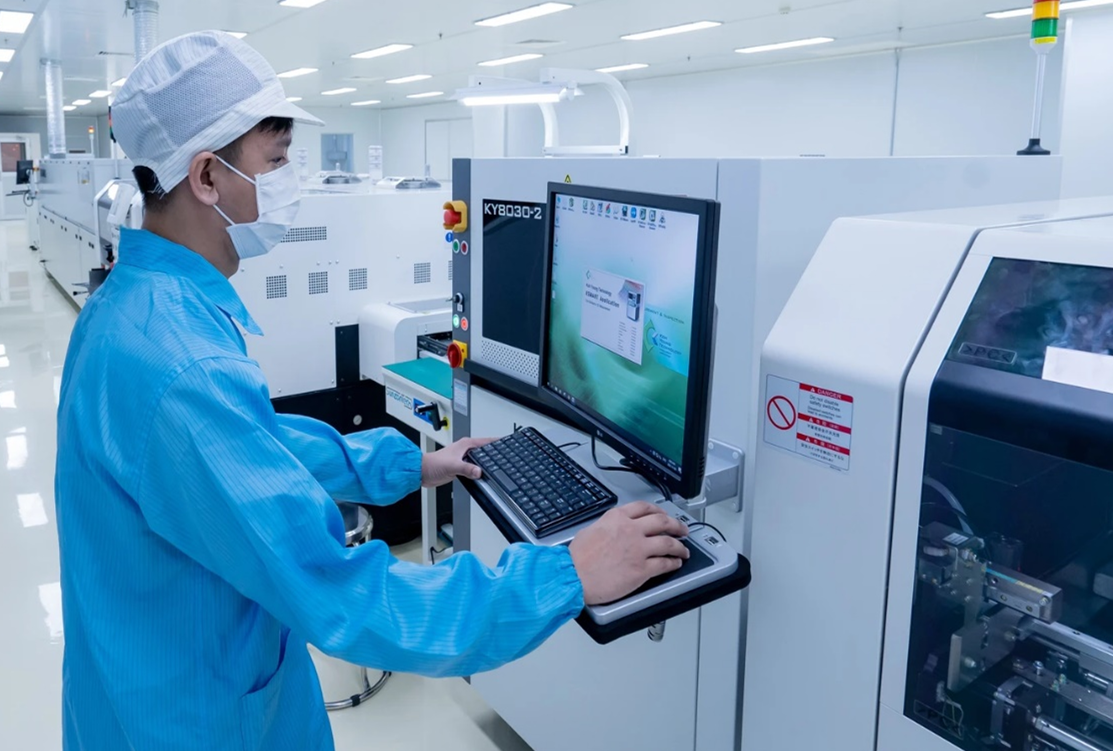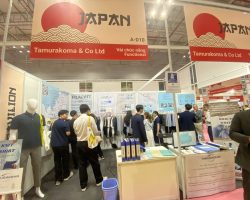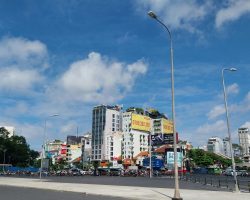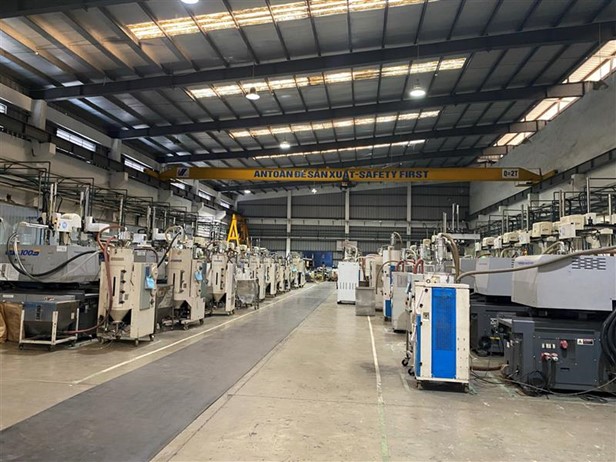In order to keep up with the rapid growth of the semiconductor industry, the government has introduced support measures to address the challenge of a limited supply of high-quality workers in the industry, leading to many universities now offering semiconductor training programs.
Vietnam’s Workforce Landscape
As of 2024, Vietnam remains in its “golden population structure” phase[1], with the labor force aged 15 and older reaching 53 million in 2024, maintaining a stable level of 67% of the total population over the past five years since 2019. The workforce is mainly from rural and suburban areas, accounting for 61%, while urban workers comprise the remaining 39%[2].
However, the proportion of highly skilled and degree-holding workers in Vietnam remains relatively low. In 2024, only around 28% of the population had completed vocational training or higher education[3]. The semiconductor industry faces a similar situation, as a professional economist in Vietnam points out, for the next 5 – 10 years, the semiconductor industry will demand 20,000 to 50,000 high-skill workers[4]. Meanwhile, Vietnam now only has around 6,000 chip design engineers, mostly in Ho Chi Minh City[5].

Government Initiatives to Strengthen the Semiconductor Workforce
On September 21, 2024, the government issued Decision No. 1017/QĐ-TTg: Developing human resources for the semiconductor industry by 2030, with a vision to 2050. This decision outlines specific objectives and tasks aimed at fostering the growth of Vietnam’s semiconductor workforce.
Decision No. 1017/QĐ-TTg: Semiconductor workforce development plans
| Focus sector | Objective until 2030 | Objective until 2050 |
| Human resource | Vietnam aims to develop 50,000 highly skilled professionals with at least a university degree in fields related to the semiconductor industry, including:
· At least 42,000 engineers, 7,500 master’s degree holders, and 500 doctoral researchers. · A minimum of 15,000 professionals specializing in chip design and research and 35,000 workers engaged in assembly, testing, packaging, and manufacturing. · At least 5,000 experts in artificial intelligence (AI) applications specifically serving the semiconductor industry. |
· Meeting Vietnam’s demand for both the quantity and quality of human resources in the semiconductor industry
· Training institutions and higher education institutions/Universities in Vietnam are fully capable of providing high-quality human resource training to serve the semiconductor industry |
| Infrastructure | · Constructing, upgrading, and modernization of four national-level semiconductor laboratories, with 2 in Hanoi, 1 in Ho Chi Minh City, and 1 in Da Nang.
· Semiconductor laboratories at 18 educational institutions nationwide will be built and upgraded[6]. |
|
| Training program | · Coordinating with domestic and international organizations and enterprises to provide specialized training for 1,300 professors at research institutes, universities, training support centers, and businesses.
· Developing and implementing exchange programs and scholarship initiatives for semiconductor-related fields. |
University Efforts in Expanding Semiconductor Training Programs
With the active support of the government, around 160 universities in Vietnam now offer training programs related to semiconductors, covering disciplines such as information technology, electrical-electronics, and electronics-telecommunications. Notably, universities such as Hanoi University of Science and Technology, FPT University, and Hanoi National University of Education have recently introduced semiconductor-specific programs, focusing on key areas such as chip design, manufacturing, and testing.
Thanks to the growing number of universities offering semiconductor-related programs, Vietnam currently enrolling over 1,400 students in semiconductor engineering programs every year, with a primary focus on integrated circuits design[7]. This enrollment number is projected to increase by 20% to 30% annually, reflecting the rising interest and growing investment in semiconductor education[8].
Additionally, starting in the 2025 academic year, several Vietnamese universities will introduce new programs in semiconductor technology to further strengthen the talent pipeline.
Some Universities offer semiconductor training programs
| University | Location | Expected enrolled
(Students) |
Academic year |
| Hanoi National University of Education | Hanoi | 120 | 2025 |
| Vietnam National University – University of Engineering and Technology | Hanoi, HCMC | 600 | 2025 |
| Vietnam National University – University of Science | Hanoi, HCMC | 2 semiconductor programs | 2025 |
| Vietnam Japan University | Hanoi | 100 | 2025 |
来源:B&Company 编译
With rapid implementation progress, Hanoi National University of Education aims to train 20,000 high-quality professionals for the semiconductor industry by 2030, meeting 40% of the country’s workforce demand in this sector[9].
Universities are increasing in semiconductor training programs
![]()
来源: VnExpress
结论
Vietnam is gradually becoming more deeply integrated into the semiconductor industry, with not only the sector experiencing strong growth but also a rapid increase in the number of universities, offering semiconductor training programs. With the active guidance and support of the government, Vietnam is positioning itself as a key semiconductor hub within the region in the near future.
[1] Golden population structure is characterized by the highest proportion of the working-age population (15-64 years old) compared to the dependent population (under 15 years old and over 64 years old)
[2] Portal of Ministry of Planning and Investment (2025). Vietnam’s Labor and Employment Situation in 2024 <使用权>
[3] General Statistics Office of Vietnam (2025). Vietnam Labor Force Situation in 2024 <使用权>
[4] Vietnam Economic Times (2024). Highly Skilled Workers is the Most Important Factor to Develop Semiconductor Industry in Vietnam <使用权>
[5] Nhan Dan Newspaper (2023). Severe Shortage of Semiconductor Workforce in Vietnam <使用权>
[6] (1) University of Information Technology – Vietnam National University, Ho Chi Minh City; (2) University of Science – Vietnam National University, Hanoi; (3) University of Da Nang; (4) Hanoi University of Science and Technology; (5) Thai Nguyen University; (6) Hue University; (7) Military Technical Academy; (8) University of Transport and Communications; (9) Posts and Telecommunications Institute of Technology; (10) Hanoi University of Science and Technology; (11) Hanoi University of Industry; (12) Vinh University; (13) Can Tho University; (14) Ho Chi Minh City University of Industry; (15) Ho Chi Minh City University of Technology and Education; (16) Electric Power University; (17) Academy of Cryptography Techniques; (18) Vietnam-Germany University
[7] Vietnam Economic Times (2024). Highly Skilled Workers is the Most Important Factor to Develop Semiconductor Industry in Vietnam <使用权>
[8] International Trade Administration US (2024). Vietnam Education Semiconductor Training <使用权>
[9] VnExpress (2025). Various Universities Now Opens Semiconductor Training Programs <使用权>
| B&Company有限公司
自 2008 年以来,第一家专门在越南从事市场研究的日本公司。我们提供广泛的服务,包括行业报告、行业访谈、消费者调查、商业配对。此外,我们最近还开发了一个包含越南 900,000 多家公司的数据库,可用于搜索合作伙伴和分析市场。 如果您有任何疑问,请随时与我们联系。 信息@b-company.jp + (84) 28 3910 3913 |
阅读其他文章




















